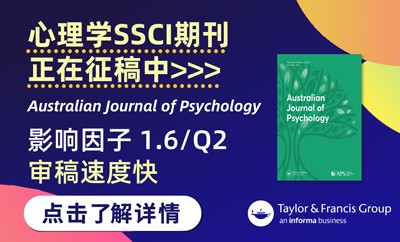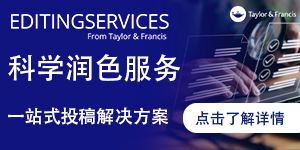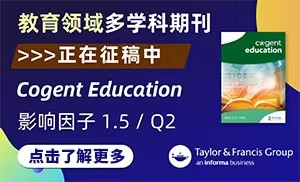-
Polyphony of (Analytical) Scores, Co‐Design, and Creative Methodologies The International Journal of Art & Design Education (IF 1.1) Pub Date : 2025-04-15 Mirka Koro, Ananí M. Vasquez, Corey Reutlinger, Cole McLeod
This experimental paper explores a form of neurodiversity‐affirming qualitative data analysis labelled a polyphony of (analytical) scores and creative methodologies utilised in our research project. Our data examples come from a federally funded research study which co‐designed sensory pedagogies for autistic students interested in computational thinking (CT). Four middle‐school teachers, or teacher
-
Gifting an Artistic Licence: Printing, Radicalism and Pedagogy The International Journal of Art & Design Education (IF 1.1) Pub Date : 2025-04-08 Vega Brennan, Alys Mendus
Spurred by an observation that ‘student art teachers don't want to be radical teachers’, this paper explores how the gift by a lecturer of a tongue‐in‐cheek hand‐printed ‘Artistic Licence’ to a new cohort of pre‐service teachers, gives permission to imagine new futures. Through a dialogic image‐exchange two educators bring their radical manifesto for art teachers/teaching as a performative autoethnography
-
When Is a Boundary Not a Boundary? Exploring the Tensions and Potentialities of Creative Practice in Doctoral Research in Art and Design Education The International Journal of Art & Design Education (IF 1.1) Pub Date : 2025-04-08 Sian Vaughan
Alongside their continuing growth in the popularity, both practice research in creative disciplines and arts‐based methods in research in the social sciences have histories now spanning several decades. In doctoral education, art and design education research sits within and across two distinct fields – the art and design doctorate and the education doctorate – each field with their own disciplinary
-
The Art and Design of Collaborative Autoethnography: Exploring Disciplinary, Methodological and Collaborative Complexity in Education Research The International Journal of Art & Design Education (IF 1.1) Pub Date : 2025-04-06 Suzanne Crowley, Abbey MacDonald, Sharon Fraser
In collaborative research, the ways in which complexity is acknowledged, negotiated and managed actively shape the nature of the complexity that is created and experienced. However, reports on complex projects seldom detail how challenges relating to research design or execution were navigated, nor discuss how frictions or tensions might productively disrupt conventional approaches. This article speaks
-
The Family as an Experiential Learning Unit: Digital Resources for Mediating Emotional Attachment in Museums The International Journal of Art & Design Education (IF 1.1) Pub Date : 2025-04-04 Guanrong Dai, Xiaofang Yuan, Yu Wu
Most of the museum's family digital interactive programmes are designed for children, and research regarding the family as a learning unit is lacking. Towards this end, we have been exploring how digital resources exist within the family museum experiential learning process and how it can be tailored to support adult groups participating through motivational and creative tools. Based on Kolb's experiential
-
Populating and Staying with Methodological Surprise The International Journal of Art & Design Education (IF 1.1) Pub Date : 2025-04-03 Mira Kallio‐Tavin, Mirka Koro
This submission shares methodological experiments, cultivated in practices of composting by staying open to a surprise in art and design education research. Openness towards a surprise reduces a need to control a defining momentum of inquiry and instead welcomes composted and layered unknowns through multisensory learning experiences. In this visual multisensory essay, authors collectively experiment
-
An Interdisciplinary Experimental Approach in Design Education: Online Workshop – “Design Your m3 on Your Campus” The International Journal of Art & Design Education (IF 1.1) Pub Date : 2025-04-02 Özlem Şenyiğit Sarıkaya, Gözde Altıparmakoğlu Sakarya, Çiğsem Yağmur Yüksel, Halil Duymuş
Workshops create a collaborative and/or sharing environment that supports our design education and turns it into an interactive one. They are important meeting places for students who continue their design education in different disciplines in different places to communicate and provide common working platforms. Therefore, such organisations, where versatile gains are achieved, are an indispensable
-
Design Sprints, Designathons and Place‐Based Learning in the Context of Real‐World Health Problems The International Journal of Art & Design Education (IF 1.1) Pub Date : 2025-03-31 Marianella Chamorro‐Koc, Lisa Scharoun
Considering the complexity of COVID‐19 and post‐pandemic learning conditions, how can we foster intercultural and real‐world learning outcomes in design studios? This article explores the possibilities for situated learning experiences to prepare students for industry. Design sprints and designathons are intensive experiences used in studio settings to solve big problems and test new ideas in a short
-
Space for Imagination? Exploring the Challenges of Implementing Art‐Based, Metacognitive Approaches for Supporting Imagination as a Route to Agency The International Journal of Art & Design Education (IF 1.1) Pub Date : 2025-03-29 Helen Burns, Suzie Dick, Cath Keay, Anna Robb, Pamela Woolner
This paper explores the implementation and evaluation of Imagination Agents, a mixed‐methods case study, with young people aged 12–13, funded by a Royal Society of Arts Catalyst Award. The project was grounded in a flexible theory that imagination enables the necessary originality for creativity, enabling learners to construct personal understandings of their own learning which equate to metacognition
-
Playing with Strangeness: Principles of Designing Action Scenarios to Promote Creativity in Children The International Journal of Art & Design Education (IF 1.1) Pub Date : 2025-03-17 Vicente Blanco, Salvador Cidrás, Estella Freire
As artists and teachers in a Teacher Training Faculty, we have designed proposals for children that transfer our own experience as creators in the studio to the educational field. In this way, the classroom is configured into a versatile workplace, like the studio, allowing us to carry out and analyse different workshops for children with the aim of promoting creativity. These workshops, which we call
-
The Role of Creative Imagination, Illustration and Storytelling in Supporting Social, Emotional and Mental Health in Educational Settings The International Journal of Art & Design Education (IF 1.1) Pub Date : 2025-03-14 Ellie Baker
This paper outlines two collaborative, child‐centred art projects I led in school settings as a child mental health expert and artist, which sought to explore how illustration, imagination and creativity can emotionally support, positively empower and visually inspire children to engage with emotional literacy, Adverse Childhood Experiences (ACEs), trauma, and eco‐anxiety. These projects brought together
-
Categories and Dilemmas of Youth Arts Programmes in Denmark and England The International Journal of Art & Design Education (IF 1.1) Pub Date : 2025-03-14 Frances Howard, Anne Mette Winneche Nielsen
Youth arts programmes give young people access to different kinds of art skills, social networks and professional standard opportunities. This article explores a typology of youth arts from across five programmes in Denmark and England, examining through observations and interviews with staff and young people what kind of arts practices are centered within the programmes. Our categories incorporate
-
Incorporating Universal Design: Evaluating Its Role in Textile Design Education for Accessible Home Textiles The International Journal of Art & Design Education (IF 1.1) Pub Date : 2025-03-13 Kate Nartker, Traci A. M. Lamar, Colby Hopper
Universal design (UD) is a design philosophy that offers effective concepts and tools to help designers develop accessible products, services, and environments. Despite the growing need for inclusive design strategies, UD is not typically integrated into design education, particularly textile design. Textile design is associated with the process of utilising aesthetic and technical elements to develop
-
The Role of Imagination in Autoethnographic Research The International Journal of Art & Design Education (IF 1.1) Pub Date : 2025-03-12 Abbie Cairns
This paper explores the role of imagination on art and design educators who undertake autoethnographic research in adult community learning (ACL) in the UK. ACL in the UK comprises community‐based learning opportunities delivered by local authorities and general further education colleges (Department for Education [DfE] 2019) and provides accredited and non‐accredited adult learning, primarily catering
-
Ecologies of Collective Imagination The International Journal of Art & Design Education (IF 1.1) Pub Date : 2025-03-11 Penny Hay, Vlad Glăveanu
Ecologies of collective imagination involve creating and sharing imagination practice. This modest piece of research engaged 10 artists, environmentalists, and educators to think together about how nature can be a source and a driver of the imagination and sense of possibility for individuals and communities. Together we focused on the concept of re‐imagining learning, inside and outside, researching
-
The Imaginary Museum: Researching Imagination Through Practices of the Imaginary The International Journal of Art & Design Education (IF 1.1) Pub Date : 2025-03-11 Kathryn Cutler‐MacKenzie, Anna Cutler
In this paper we explore the idea of an equity of imagination in the context of learning in the art museum. We mean by this a shared mental space in which artworks and publics are afforded mutual agency and power to generate meaning, with opportunities to conjure new meanings for shifting and changing contexts. We focus on how this can emerge through artistic interventions that seek to expand definitions
-
A Collection of Children's Artworks as Imaginative Openings The International Journal of Art & Design Education (IF 1.1) Pub Date : 2025-02-19 Geralyn (Gigi) Schroeder Yu
This article describes preservice art education students who curated an exhibition for a university gallery, using description and analysis as aesthetic inquiry processes. The students curated an exhibition that placed 1977 Central and Latin American and contemporary children's artworks in dialogue with each other. They constructed themes that facilitated visual comparisons between contexts and narratives
-
Imaginative Interdependence: Imagination, Speculation and Aesthesis The International Journal of Art & Design Education (IF 1.1) Pub Date : 2025-02-15 Dennis Atkinson
This paper addresses the importance of creativity, speculative imagination and the production of novelty in pedagogic practices in art education and art practice. These terms refer to always incomplete assemblages or agencements of experiencing. Whitehead's ideas on imagination, speculation and propositions are linked with Stengers's work on speculation and the cosmic adventure. The paper proceeds
-
Issue Information The International Journal of Art & Design Education (IF 1.1) Pub Date : 2025-02-14
-
Explorative Interaction with Materiality in Norwegian Primary School Makerspaces from the Perspective of Arts and Crafts Education The International Journal of Art & Design Education (IF 1.1) Pub Date : 2025-02-13 Lovise Søyland, Ingrid H. Høibo, Camilla Groth, Pirita Seitamaa‐Hakkarainen
Educational makerspaces have now been established in many Norwegian schools. Makerspace initiators promote active learning by using new and traditional materials, tools and technologies in creative activities. Arts and crafts (A&C) education shares many ideas with makerspaces, inviting pupils to explorative interaction through material engagement that promotes multiple ways of knowing. In this study
-
Artivist Childhoods The International Journal of Art & Design Education (IF 1.1) Pub Date : 2025-02-11 Tahlia Lasczik, Alexandra Lasczik, Amy Cutter‐Mackenzie‐Knowles
The rise in the number of young people disengaged from mainstream schooling is reaching critical proportions. This paper explores a child‐framed participatory inquiry known as The Walking A/r/tography Project, which sought to challenge, empower and engage youth at risk in one Special Assistance Secondary School in Southeast Queensland through a/r/tographic mappings of place and subsequent critical
-
All Together and Separately: Learning to Learn in the Studio The International Journal of Art & Design Education (IF 1.1) Pub Date : 2025-02-04 Pınar Koç
This study aims to develop learning to learn and self‐learning in the architectural design studio. The study considers that one of the ways in which the architectural design studio can be resistant to environmental conditions is to be aware of and manage the way the architecture student learns. The main theme of the methodological approach is learning how to learn, and its experients are first‐year
-
Biophilic Design: An Experiment in Teaching Furniture Design Studio The International Journal of Art & Design Education (IF 1.1) Pub Date : 2025-01-21 Wael Rashdan, Ayman Fathy Ashour
In response to increasing societal concerns for environmental issues, there is a growing demand for products that are both functional and eco‐friendly. This study investigates how integrating nature‐inspired furniture design into educational curricula prepares students for the evolving demands of the design industry. Conducted within an undergraduate furniture design studio, students were tasked with
-
The Quiet Learner of the UK Art Classroom The International Journal of Art & Design Education (IF 1.1) Pub Date : 2025-01-18 Mags Ryder
This paper investigates the perceptions and implications of quietness among students in the UK classroom, challenging the prevalent notion that vocal participation equates to engagement and success. Despite concerns from educators and parents about quiet students' engagement, this research explores how silence and quietness function as integral components of classroom dynamics. Through interviews with
-
Becoming Materially Aware with Mushrooms: A Sociomaterial Analysis of Biomaking The International Journal of Art & Design Education (IF 1.1) Pub Date : 2025-01-18 Päivikki Liukkonen, Henriikka Vartiainen, Sirpa Kokko
Biomaking and other bio‐oriented creative approaches are beginning to gain traction in education. Operating at the intersections of arts and sciences, they represent a field of integrative practices that involve creative making with the biological. In educational contexts, however, bio‐oriented creative practices have been studied primarily from hylomorphic perspectives that do not account for the
-
The Influence Aesthetic Processes Can Have on Daycare Children's Play The International Journal of Art & Design Education (IF 1.1) Pub Date : 2025-01-16 Johan Bundgaard Nielsen
This article argues for a reconceptualisation of early childhood education, where learning and development are not only valued by outcome, and aims to investigate how aesthetic processes are organised in ways for the children to be inspired, to compare, explore, and play. Inspired by a Vygotsky perspective and his theories of play, imagination, and creativity, the article argues for developmental perspectives
-
Digital Infographic Creation in Design Education: A Participatory Learning Algorithm Measuring Location‐Based Spatial Impact The International Journal of Art & Design Education (IF 1.1) Pub Date : 2025-01-13 Emel Birer, Esin Hasgül, Elif Gizem Metin
Design education includes many pursuits that deal with creativity, thinking and visual communication techniques in the learning process. This study aims to create a participatory learning algorithm based on a location, while measuring the spatial impact through an emergent situation. The exemplified issue is determined as fire that emerged due to climate change, which has become a significant agenda
-
Visions of the Future of Craft Education The International Journal of Art & Design Education (IF 1.1) Pub Date : 2025-01-13 Sanna Mommo, Anna Kouhia, Marja‐Leena Rönkkö
This study examines the history of craft education, especially in the context of social and temporal changes, and envisions its future based on narratives collected by student teachers at two Finnish universities. The research material covers essay responses that discussed the future of craft education in the light of forecasted megatrends. The essay responses were analysed using narrative methods
-
Exploring the Effect of Cultural Inspiration Distance and Timing on Designer’ Creativity in Targeted Cultural Creative Design Pattern The International Journal of Art & Design Education (IF 1.1) Pub Date : 2025-01-13 Guodong Chen, Zuting Li, Qixun Zhao, Bei Kong, Yana Gao, Rong Pan
Cultural creative design activity and education involve the application of cultural inspiration. This study examines the impact of cultural inspiration distance and timing on designer’ creativity in Targeted Cultural Creative Design Pattern (TCCDP). Four design novice groups attended the cultural product design experiment with a combination of distance (far or near‐cultural inspiration) and timing
-
A Design School for Social Innovation: Reflections on a Pilot Case in Japan The International Journal of Art & Design Education (IF 1.1) Pub Date : 2025-01-13 Fumiya Akasaka, Fuko Oura, Kentaro Watanabe
The paradigm of design must drastically change to promote sustainable social development that considers not only economic growth but also human well‐being and environmental sustainability. Some scholars argue that the central paradigm of design should focus more on the societal perspective. This article refers to such a socially oriented design approach as design for social innovation (DfSI). Our study
-
How Children Draw, Write and Tell About Portraying Mixed Emotions in Themselves and Others Children The International Journal of Art & Design Education (IF 1.1) Pub Date : 2025-01-10 Esther Burkitt, Dawn Watling
Children alter their drawings in multiple ways depending on whether they are drawing happy, sad or mixed happy and sad experiences. However, their explanations of why they may use features to show emotions may be overlooked in interpretation. The present study therefore used the Draw–Write–Tell paradigm which integrates children's explanations of feature use to explore children's drawn representations
-
Exploring the Artistic Identity of Elementary Art Teachers The International Journal of Art & Design Education (IF 1.1) Pub Date : 2025-01-10 Tara Carpenter Estrada, Molly Neves, Connie Broadbent, Kara Aina, Rachel Wadham
Art teachers straddle two identities those of a teacher and those of an artist. While these two identities may complement each other it is clear that, particularly for elementary art teachers, they are often in conflict. As art teachers look towards balancing this dichotomy, they must discover what is necessary to equalise and maintain both their teaching and artistic identities. This self‐study offers
-
Graphic Design Education in the Era of Text‐to‐Image Generation: Transitioning to Contents Creator The International Journal of Art & Design Education (IF 1.1) Pub Date : 2025-01-10 Younjung Hwang, Yi Wu
The advancement of generative artificial intelligence (AI) presents innovative opportunities and new challenges across various industries and academic fields. Particularly, recent advancements in generative AI, which can create images from text, are introducing new challenges in the field of graphic design education. This study discusses methods of graphic design education utilising generative AI,
-
What Drives Design Education in Korean Classrooms? The History of South Korea's National Curriculum and Some Proposals for Design Education in Its Current Iteration The International Journal of Art & Design Education (IF 1.1) Pub Date : 2025-01-10 Seolyung Choi, Eunryung Hyun
In South Korea, the National Curriculum and textbooks, especially within design education, are closely intertwined. The Curriculum is critical in establishing educational goals and standards for each subject, acting as a blueprint for schooling. Textbooks, which must be approved, are designed to align with this Curriculum. This article introduces new content for design textbooks guided by the 2022















 京公网安备 11010802027423号
京公网安备 11010802027423号